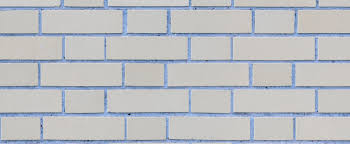
When building a new home, one of the most critical decisions you’ll make is selecting the right roofing material. The roof not only serves as protection against the elements but also significantly impacts your home’s aesthetic, energy efficiency, and resale value. As we move into 2025, advancements in technology and design have broadened the options available. In this comprehensive guide, we’ll explore the 25 best roofing materials to consider for your new home.
1. Asphalt Shingles
Asphalt shingles remain one of the most popular roofing materials due to their affordability, ease of installation, and variety of styles. In 2025, manufacturers are producing longer-lasting and more environmentally friendly options. Asphalt shingles are available in a range of colors and designs, allowing homeowners to match their roof to their home’s exterior.
Pros
- Affordable
- Wide variety of colors and styles
- Easy to install
Cons
- Limited lifespan (15-30 years)
- Can be susceptible to wind damage
2. Metal Roofing
Metal roofing has gained popularity for its durability and longevity. It can last over 50 years and comes in materials like steel, aluminum, and copper. With advancements in technology, metal roofs are now available in various colors and styles, mimicking traditional shingles or tiles.
Pros
- Extremely durable
- Energy-efficient
- Lightweight
Cons
- Higher initial cost
- Can be noisy during rain or hail
3. Clay Tiles
Clay tiles are known for their classic appearance and exceptional durability. They are especially popular in warmer climates due to their ability to reflect sunlight and keep homes cool. In 2025, clay tiles are being manufactured with improved colors and finishes that resist fading.
Pros
- Long-lasting (up to 100 years)
- Eco-friendly
- Fire-resistant
Cons
- Heavy (may require additional structural support)
- Expensive
4. Slate Roofing
Slate is one of the most prestigious roofing materials available. Its natural stone composition makes it incredibly durable and long-lasting. With proper maintenance, slate roofs can last over a century. In 2025, the trend is moving towards synthetic slate options that mimic the look of natural slate at a lower cost.
Pros
- Extremely durable
- Unique aesthetic
- Fire-resistant
Cons
- High installation cost
- Heavy material
5. Rubber Roofing
Rubber roofing, often made from recycled materials, is an eco-friendly choice for flat roofs. In 2025, advancements have enhanced the durability and lifespan of rubber roofs, making them a viable option for residential homes.
Pros
- Eco-friendly
- Durable and weather-resistant
- Easy to install
Cons
- Limited aesthetic options
- Can be damaged by sharp objects
6. PVC Roofing
Polyvinyl chloride (PVC) roofing is another excellent option for flat roofs. It is known for its energy efficiency and durability. In 2025, new formulations of PVC are being developed that improve flexibility and lifespan.
Pros
- Energy-efficient
- Resistant to UV rays and chemicals
- Long-lasting
Cons
- Higher initial cost
- Installation requires specialized contractors
7. TPO Roofing
Thermoplastic polyolefin (TPO) roofing is a popular choice for commercial buildings but is increasingly being used in residential applications. It offers excellent energy efficiency and is lightweight.
Pros
- Energy-efficient
- Cost-effective
- Reflective surface reduces cooling costs
Cons
- May require additional maintenance
- Quality varies by manufacturer
8. Wood Shingles and Shakes
Wood shingles and shakes provide a natural look that many homeowners desire. They are typically made from cedar, redwood, or pine. In 2025, improved treatments and finishes help enhance their lifespan and resistance to rot.
Pros
- Aesthetic appeal
- Insulating properties
- Environmentally friendly options available
Cons
- Requires regular maintenance
- Vulnerable to rot and insect damage
9. Fiber Cement Shingles
Fiber cement shingles combine wood fibers, cement, and sand to create a highly durable roofing material. They are designed to mimic the look of wood or slate but come with added durability and lower maintenance requirements.
Pros
- Fire-resistant
- Long-lasting (up to 50 years)
- Low maintenance
Cons
- Heavier than asphalt shingles
- Higher installation cost
10. Solar Roofing
Solar roofing integrates photovoltaic panels directly into the roof surface. As solar technology advances, these roofs are becoming more efficient and aesthetically pleasing. In 2025, solar roofs are a smart investment for energy-conscious homeowners.
Pros
- Generates electricity
- Reduces energy bills
- Environmentally friendly
Cons
- High installation cost
- Requires sunny conditions for maximum efficiency
11. Green Roofing
Green roofs, or living roofs, are covered with vegetation. They provide excellent insulation and can help manage stormwater. In 2025, green roofing systems are becoming more accessible for residential homes.
Pros
- Eco-friendly
- Improves air quality
- Provides insulation
Cons
- Requires maintenance
- Heavy (may need structural support)
12. Composite Roofing
Composite roofing materials combine various materials to create a durable and lightweight option. Innovations in 2025 are leading to even better performance and aesthetics, making it a popular choice among homeowners.
Pros
- Lightweight
- Variety of styles
- Resistant to fading and cracking
Cons
- Can be more expensive than asphalt
- Quality varies by manufacturer
13. Thatched Roofing
Thatched roofs are made from dried vegetation such as straw or reeds. They offer a unique aesthetic and excellent insulation. Although less common, they are gaining popularity for their sustainability and charm.
Pros
- Unique appearance
- Excellent insulation
- Eco-friendly
Cons
- Requires regular maintenance
- Vulnerable to pests
14. Synthetic Roofing
Synthetic roofing materials, such as synthetic slate or tile, are designed to mimic traditional materials while being lighter and more durable. As technology improves, these options are becoming more popular in 2025.
Pros
- Lightweight
- Durable and resistant to weather
- Variety of styles
Cons
- Can be expensive
- Quality varies by brand
15. Stone Coated Steel
Stone-coated steel combines the durability of metal with the aesthetic appeal of traditional materials. This option is becoming increasingly popular due to its longevity and resistance to damage.
Pros
- Durable and lightweight
- Variety of styles
- Energy-efficient
Cons
- Higher initial cost
- Requires skilled installation
16. Charcoal Roofing
Charcoal roofing is a newer trend that uses dark materials to enhance energy efficiency. This roofing type absorbs heat and can help reduce energy costs during colder months.
Pros
- Energy-efficient
- Unique aesthetic
- Reduces heating costs
Cons
- Limited availability
- May not suit all architectural styles
17. Bamboo Roofing
Bamboo is a sustainable material gaining traction in roofing. It is lightweight, strong, and offers a unique aesthetic. Innovations in treatment have improved its durability and resistance to the elements.
Pros
- Eco-friendly
- Unique appearance
- Strong and lightweight
Cons
- Limited availability
- Requires maintenance
18. Recycled Materials
Using recycled materials for roofing is an eco-conscious choice that is gaining popularity. Manufacturers are producing roofing options from recycled rubber, plastics, and metals, making sustainable roofing more accessible.
Pros
- Environmentally friendly
- Unique aesthetic options
- Durable and cost-effective
Cons
- Quality can vary
- May not be as widely available
19. Stucco Roofing
Stucco roofing is an innovative option that uses a stucco finish to create a unique aesthetic. It is highly durable and can withstand extreme weather conditions, making it suitable for various climates.
Pros
- Durable and weather-resistant
- Unique aesthetic
- Low maintenance
Cons
- Requires skilled installation
- Limited color options
20. Corrugated Roofing
Corrugated roofing is commonly used for sheds and agricultural buildings, but its durability and lightweight nature are making it a choice for residential roofs as well. In 2025, new designs are enhancing its aesthetic appeal.
Pros
- Lightweight
- Easy to install
- Cost-effective
Cons
- Limited aesthetic options
- Can be prone to rust if not properly treated
21. Glass Roofing
Glass roofing provides a modern and stylish option that allows natural light into the home. While not common, it is gaining traction for its aesthetic and energy efficiency.
Pros
- Unique aesthetic
- Allows natural light
- Energy-efficient
Cons
- Expensive
- Requires specialized installation
22. Insulated Roofing Panels
Insulated roofing panels are designed to improve energy efficiency by providing insulation as part of the roofing system. This option is becoming more popular in 2025, particularly for modern homes.
Pros
- Energy-efficient
- Quick installation
- Durable
Cons
- Higher initial cost
- Limited style options
23. Terrazzo Roofing
Terrazzo roofing is a unique and artistic option made from a mixture of marble, quartz, and other materials. It offers a distinctive look and is highly durable.
Pros
- Unique aesthetic
- Durable and long-lasting
- Eco-friendly options available
Cons
- Expensive
- Requires skilled installation
24. Vinyl Roofing
Vinyl roofing is a cost-effective and durable option for flat roofs. It is lightweight and resistant to UV rays, making it a popular choice for homeowners in 2025.
Pros
- Cost-effective
- Lightweight
- Easy to install
Cons
- Limited aesthetic options
- Can be prone to damage from sharp objects
25. Light-Weight Concrete Roofing
Light-weight concrete roofing is a newer technology that provides the durability of concrete without the added weight. This option is becoming more popular due to its energy efficiency and strength.
Pros
- Durable and long-lasting
- Energy-efficient
- Lightweight
Cons
- Higher initial cost
- Requires skilled installation
Conclusion
Choosing the right roofing material for your new home is a significant decision that impacts durability, aesthetics, and energy efficiency. As we look at the options available in 2025, homeowners have a wealth of choices to fit their needs and preferences. From traditional materials like asphalt shingles and clay tiles to innovative solutions like solar roofing and green roofs, the possibilities are endless.
When making your decision, consider factors such as climate, budget, and personal style. Consulting with a roofing professional can also provide valuable insights tailored to your specific situation. With the right roofing material, you can ensure that your new home is well-protected and visually appealing for years to come.
